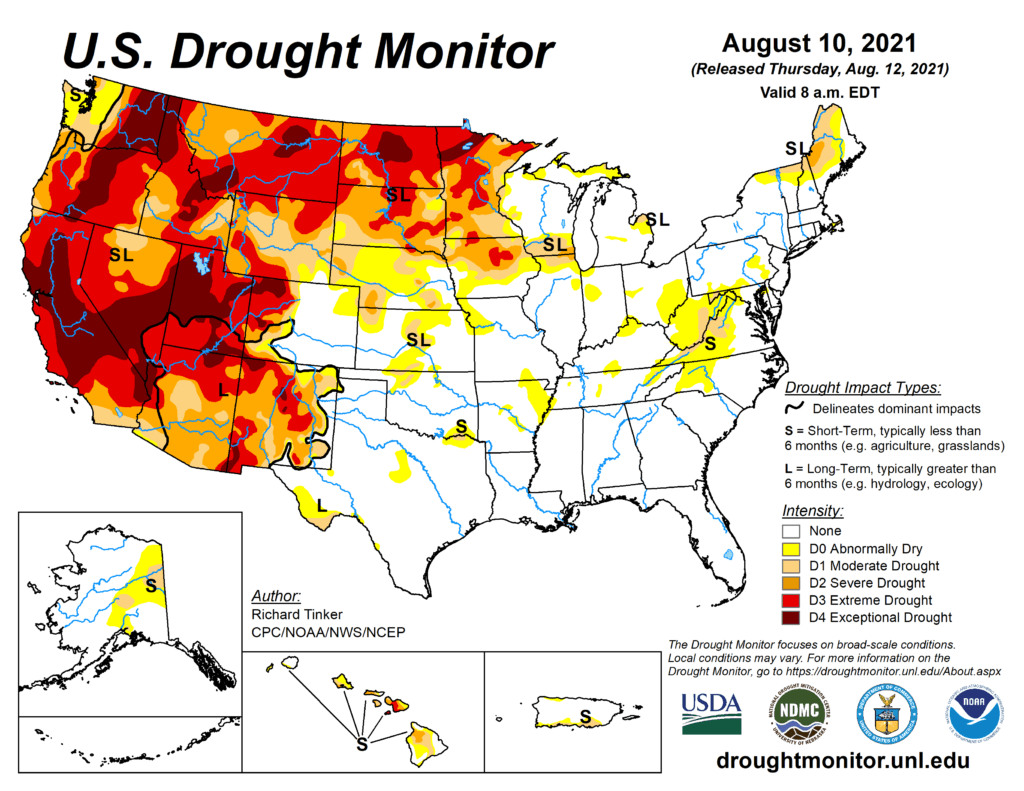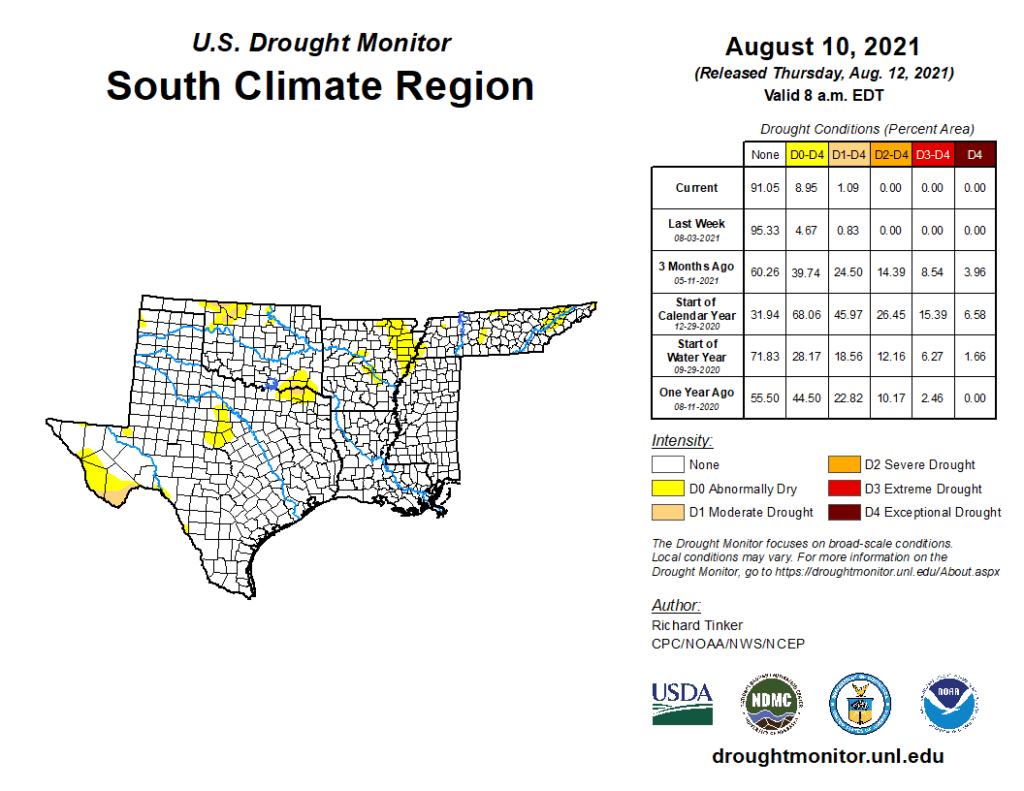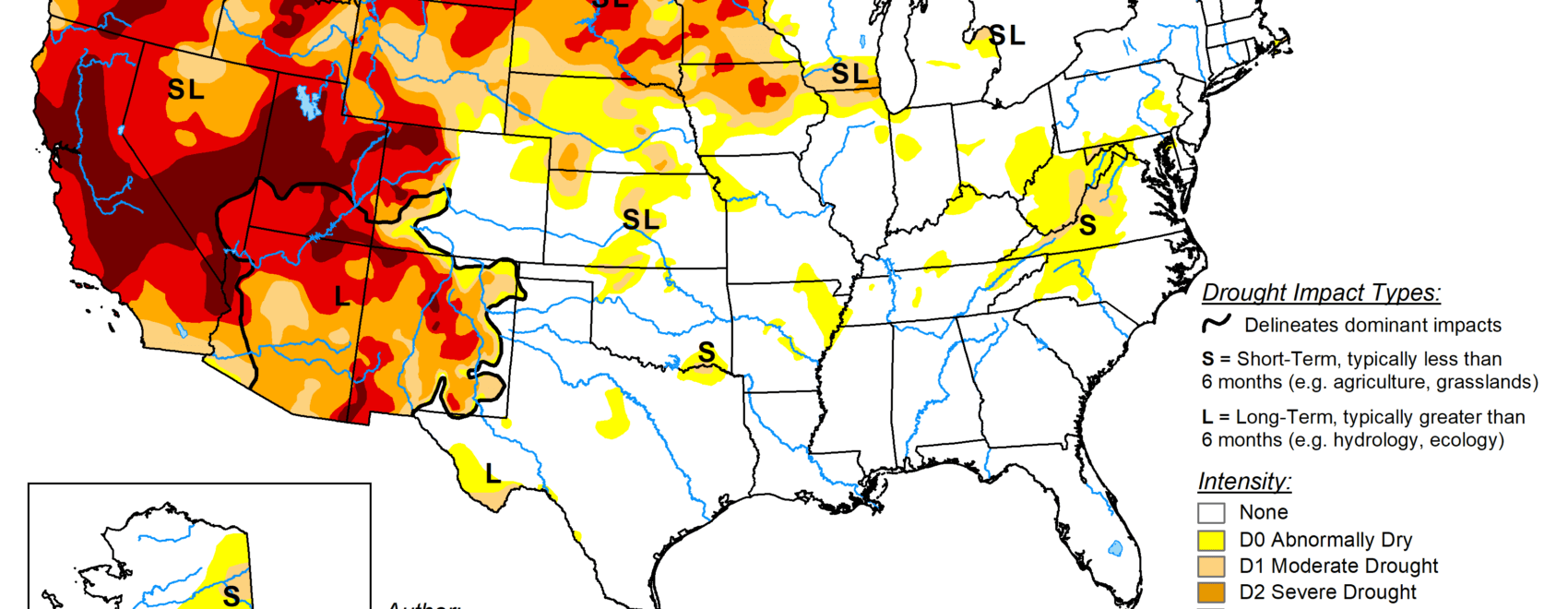
This Week’s Drought Summary
Monsoonal moisture was squelched this week, in contrast to the heavy rainfall that had been pelting the southern Rockies and – to a lesser extent – much of the interior West. Totals between 1 and 2 inches were limited to a few patches in southeastern Arizona, central and south-central New Mexico, and scattered higher elevations in central Colorado and central Montana. West of the Plains, only part of northwestern Montana and northwestern Washington saw fairly widespread amounts of 1.5 to locally 3.0 inches. Farther east, significant rainfall evaded most areas of dryness and drought from the Plains to the Atlantic Seaboard, with a few dramatic exceptions. Most of interior Wisconsin recorded 2 to 5 inches of rainfall from north of Milwaukee into far southeastern Minnesota. Moderate to heavy rains were not as widespread elsewhere, with amounts exceeding an inch covering relatively small areas. The scattered areas of heavy rain included northeastern and part of southern North Dakota, northeastern South Dakota, a few areas from central Minnesota southward into central Iowa and southeastern Nebraska. Similarly, widely-scattered areas of 1 to locally 3 inches dotted the Midwest, lower Ohio Valley, central and southern Appalachians, and northern New England. But most of these regions recorded light precipitation, and other areas of dryness and drought across the contiguous states saw little or no precipitation. As a result, dry areas in the western Great Lakes region experienced significant improvement, but otherwise improvement was limited to relatively small, scattered areas where the heavy rains fell. Increased drought coverage and intensity was more common, as a large majority of these areas recorded light precipitation at best. Crops have been damaged by the lack of precipitation, with spring wheat and barley most significantly impacted. In primary producing states, 46 percent of the barley crop was in poor or very poor condition, compared to only 4 percent at this time last year. Similarly, about 60 percent of spring wheat in the primary producing states was in poor or very poor condition, compared to 7 percent at this time last year.

South
Areas of dryness and drought remained restricted to a few relatively small areas, but coverage increased from last week, and surface moisture depletion was exacerbated by abnormally hot weather. New or expanded patches of D0 dotted Tennessee, Oklahoma, and Texas, with broader D0 coverage introduced in central and northeastern Arkansas. Dry conditions are relatively short-lived in this region, but the hot, dry weather is quickly depleting soil moisture, and the region could see more substantial expansion and intensification of dryness as August progresses. A small area of moderate drought was introduced within the D0 in the eastern Red River Valley where 60-day precipitation totals were under half of normal.

